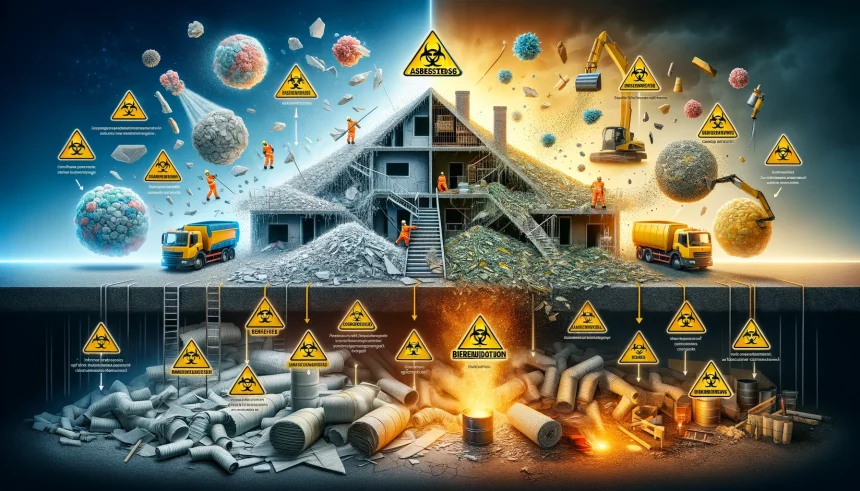Asbestos, once celebrated for its formidable heat resistance, durability, and insulating prowess, now stands as a significant environmental and health quandary on a global scale. Its association with severe health conditions such as lung cancer, mesothelioma, and asbestosis has led to widespread bans and restrictions. Despite these measures, the remnants of its pervasive use in various sectors, including construction and automotive industries, linger as hazardous debris, posing daunting disposal challenges. This narrative embarks on an exploration of the asbestos dilemma and the emergence of groundbreaking, sustainable methodologies for its eradication and potential transformation.
Dissecting the Asbestos Conundrum
The genesis of asbestos-related waste is chiefly from the demolition or refurbishment of infrastructures harboring asbestos-containing materials (ACMs). The disposal of this hazardous waste is intricate due to its carcinogenic propensity. Mishandling during disposal can unleash asbestos fibers into the atmosphere, jeopardizing public health and the ecological balance. Thus, asbestos waste necessitates meticulous stewardship, spanning collection to final disposal, to avert environmental contamination.
Prevailing Disposal Paradigms
Currently, the principal strategy for asbestos waste disposal is sequestration in specialized landfills engineered to contain and prevent the escape of asbestos fibers into the environment. However, this method is fraught with limitations, including dwindling landfill space and the looming threat of long-term ecological repercussions, casting doubts on its sustainability.
Pioneering Asbestos Waste Management Strategies
In light of the constraints associated with conventional disposal techniques, there’s a growing impetus toward discovering and implementing novel, eco-friendly approaches for managing asbestos waste:
1. Transformation into Harmless Materials via Recycling
Technological strides have ushered in the potential to recycle asbestos waste into benign materials. A technique of note is vitrification, where asbestos is subjected to extreme heat, morphing the fibers into an inert, glass-like substance devoid of carcinogenic traits. This byproduct finds utility in various construction domains, such as aggregate in road construction or as an ingredient in bricks.
2. Neutralization through Chemical Intervention
This strategy seeks to chemically alter the molecular architecture of asbestos fibers, rendering them innocuous. Researchers are looking into certain chemicals that can break down asbestos fibers into non-harmful parts. This could lead to on-site neutralization of asbestos, which would save time and money on transportation and disposal.
3. Microbial Detoxification via Bioremediation
An avant-garde research area, bioremediation, investigates the capacity of certain microbes to decompose asbestos fibers. Although in nascent stages, this approach could herald a cost-effective, eco-conscious pathway to asbestos waste disposal, leveraging the natural decomposing abilities of selected bacteria and fungi.
Overcoming Hurdles and Charting the Future
Despite the optimism surrounding these avant-garde disposal methodologies, their journey from concept to implementation is beset with challenges, including securing regulatory endorsements, ensuring economic feasibility, and cultivating public support. The transnational character of the asbestos waste dilemma necessitates global collaboration and the harmonization of disposal standards.
Epilogue
The complex issue of asbestos waste disposal presents not only a formidable challenge but also an opportunity for ingenuity and advancement. By venturing into alternative disposal techniques such as vitrification, chemical neutralization, and bioremediation, we stand on the cusp of mitigating the environmental and health hazards posed by asbestos. The synergy of governmental, industrial, and academic entities is pivotal in forging safe, sustainable, and efficacious strategies for asbestos waste management, steering us toward a safer, healthier future.








